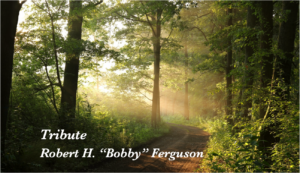Origins of the Town of Maurice
by Douglas L. Villien Sr.
Maurice Villien: The Founder of the Town of Maurice
Much has been written about the Acadians who settled in this area but not generally known are those foreign French who nested amongst them. One such individual in the last wave of immigration bears recognition.
To understand how the Village of Maurice began and its early years, one should know the origin of its founder and his journey here. Brothers Jean-Maurice and Joseph-Etienne Villien hoped to seek new opportunities in America and settle in an area that reminded them of their homeland. Maurice and Etienne were from the hamlet of Vulmix in the commune of Bourg St-Maurice, the largest French-speaking town in the Tarentaise Valley within the heart of the French Alps. Bourg St-Maurice was described as a peaceful little market town in a large basin at the foot of Mt. Blanc. They were descendants of dairy farmers who were known for a variety of cheeses.

Maurice and Etienne arrived in New Orleans in 1855. Tragically, Etienne accidentally drowned in the Mississippi River shortly after arriving in New Orleans.
When Maurice departed his homeland, he was a subject of Charles Albert, King of Sardinia (he was a Sardinian). His citizenship status changed while he was in the United States. He became a naturalized French subject of Napoléon III by French referendum annexing La Savoie to France in 1860. For Maurice, the status of being a naturalized citizen of France would become an important legal issue later in his life.
Establishing Trade
Following Etienne’s death, Maurice moved west to the French-speaking area along Bayou Teche between Jeanerette and New Iberia. There, he established a mercantile business at Île Piquant, today Patoutville, in St. Mary Parish. His general store was known as Le Petit Magasin.
Like other foreign French, Maurice was politically inactive and indifferent to the North and South discord of the 1860s. He had no interest in becoming involved with Southern rights or slaves. He was an energetic young businessman engaged in marketing wares throughout the region. He thought he was protected as a citizen of France and immune to engagement with army troops. He disagreed with the encroachment of the Civil War into his daily life. However, without regard for Maurice’s neutrality as a French citizen,
Union Army General Michael K. Lawler and his troops twice plundered Maurice’s store on October 15 and 16, 1863. He was the victim of the army’s wantonness and greed.
After the Civil War, Maurice left Île Piquant to establish another store on a site along the busy waterway of Bayou Vermilion. Here, ca. 1867, he met his bride-to-be, Marie-Marguerite Chaty, a native of the Youngsville-Milton area.

On the west bank of Bayou Vermilion, at a location called Milton Crossing, Maurice established a new store or depot. From Milton, he would sell his wares by horse-drawn hack throughout the countryside in Vermilion, St. Mary, and Lafayette parish.
Homesteading in Vermilion Parish
Sections of public land in Ward Four were still available and for sale to the general public between 1860 and 1890. Around the end of 1868, Maurice and Marie settled on a tract of land three miles west of Milton and built a store and home along a wagon road that traversed east-west across the prairies. In 1873, they applied for a land grant on the northeast quarter of Section 11.
Their patent for homestead was certified in 1878. They had become pioneers of commerce in an area of lush vegetation on the high highland of Prairie Vermilion. The homestead was near the center of their tract in a small wooded area, an island of trees, on a sea of grassland.
The small stand of trees and pond was located near the center of their tract. Their home stood on the opposite side of the pond from the store, which was called le Magasin à Maurice. Family and neighbors referred to the site’s location as “The Grove.” While living there, Maurice and Marie had five children. Joseph Angelle (b. 1870) and Jean Maurice, Jr. (b.1875) lived to adulthood. Maurice and Marie would frequently host a Catholic mass in their home when a priest from Abbeville would make a periodic visit.

The small prairie store attracted other settlers to form a community on nearby lands. By 1875, when Jean-Maurice became a naturalized American citizen, the sparsely populated area had become known as Mauriceville, with a population of less than fifty. Nearby, Broussard Cove, located east of Mauriceville, had grown to approximately thirteen hundred persons.
Planning to Build a City
Business-minded Maurice Villien had dreams of “building a small city” for the residents of this area, and by 1885, a plan was in place. To learn more about how Maurice became today’s town, subscribe to MAURICE TODAY.
A subsequent article will follow soon.
Contributor: Douglas L. Villien, Sr., author
Source: https://www.amazon.com/s?k=Between+the+crossroads






